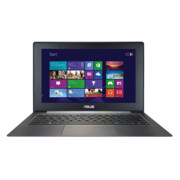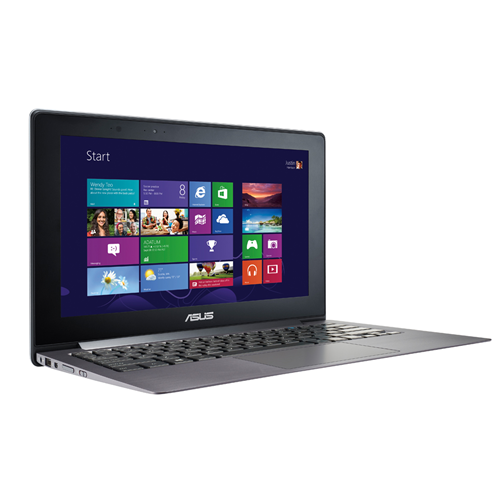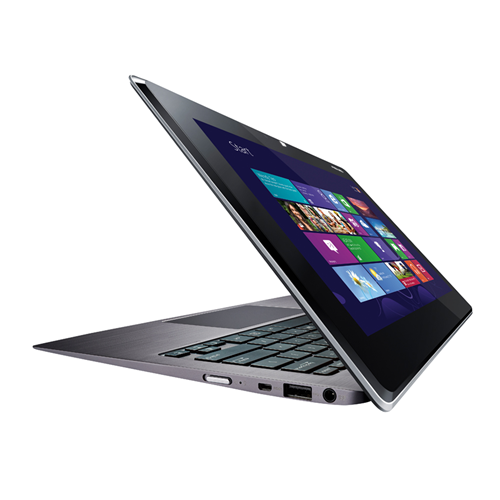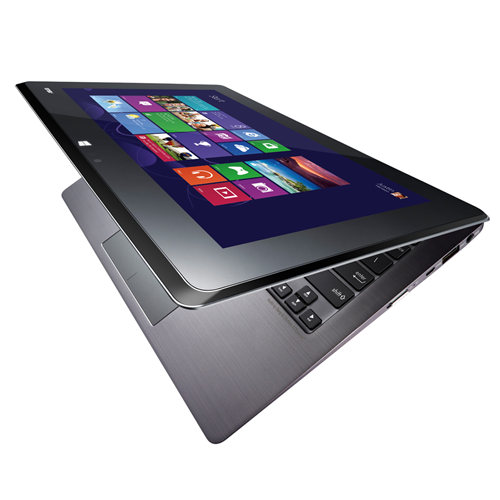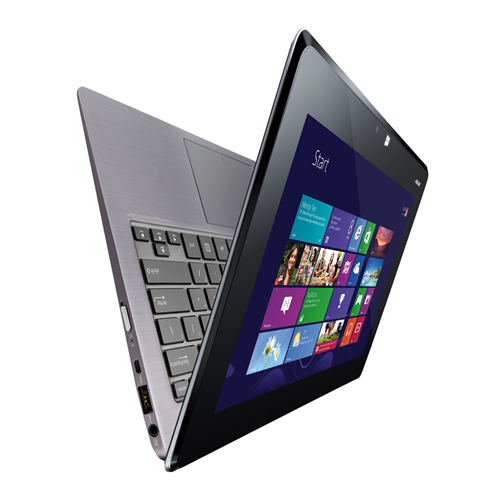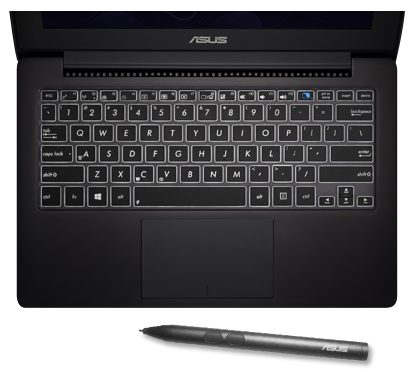Asus Taichi 21-CW002H
Spécifications de l'ordinateur portable
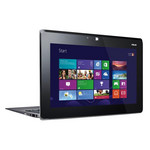
Price comparison
Moyenne de 3 notes (à partir de 6 critiques)
Critiques pour le/la Asus Taichi 21-CW002H
Source: PC Authority
 EN→FR Archive.org version
EN→FR Archive.org versionMany manufacturers are struggling to find the most natural meeting point between the tablet and the laptop, and Asus’ own Windows 8 range provides yet more evidence of this. With its VivoBooks marrying touchscreens to standard laptops, the forthcoming VivoTab range mimicking the separate tablet and keyboard dock concept of the Android-powered Transformer Pad, and the Taichi 21 ploughing its own dual-screened furrow, it seems even Asus isn’t confident enough to put all of its eggs in one basket. Give it a few years and a refined, lighter chassis married with more power-efficient CPUs and improved battery life could see this dual-screened form factor present a compelling hybrid. At present, though, Asus’ Taichi 21 feels like a bold, innovative concept that’s just a little too far ahead of its time.
Critique simple, disponibles en ligne, Courte, Date: 02/19/2013
Notes: Note globale: 67%
Source: Ultrabook News
 EN→FR Archive.org version
EN→FR Archive.org versionASUS deserves applause for trying something new and doing it as well as is possible given the current technology. It’s a flagship product that’s brought ASUS a lot of well- deserved attention but we don’t think it’s going to sell that well. It’s simply ahead of its time. Ivy Bridge is not a consumer tablet-capable processor and sandwiching two 1080p screens comes with big size and battery life trade-offs. The Taichi 21 needs to be 20% lighter with 50% better battery life. Interestingly that could be only one generation away. Haswell could make products like this into highly dynamic and usable devices that span consumer and business use.
Critique simple, disponibles en ligne, Longue, Date: 02/11/2013
Source: Engadget
 EN→FR Archive.org version
EN→FR Archive.org versionAround the time I wrote this review, I was also working on Engadget's first-ever laptop buyer's guide. I was sure the TAICHI would be a shoo-in for the convertible section, what with its innovative design and sterling spec sheet. Unfortunately, as inventive as this is as a concept, the finished product isn't quite what we all thought it would be.
Critique simple, disponibles en ligne, Longue, Date: 02/06/2013
Source: Good Gear Guide
 EN→FR Archive.org version
EN→FR Archive.org versionThe ASUS Taichi 21 is a hybrid Ultrabook that ships with two Full HD screens. Open the lid to use it as a laptop, close the lid to use it as a tablet. It's easy to use and it provides a very good tablet experience. It's not perfect though: we think it needs some tweaks to the hardware and software. But overall, it's a unit worth considering if you're after a Windows 8 hybrid unit.
Critique simple, disponibles en ligne, De taille moyenne, Date: 11/19/2012
Notes: Note globale: 75%
Source: Chip.de
 DE→FR Archive.org version
DE→FR Archive.org versionCritique simple, disponibles en ligne, De taille moyenne, Date: 02/05/2013
Notes: Note globale: 78% prix: 63% performances: 75% équipement: 66% écran: 89% mobilité: 71% ergonomie: 88%
Source: Notebookjournal
 DE→FR Archive.org version
DE→FR Archive.org versionCritique simple, disponibles en ligne, Longue, Date: 01/18/2013
Notes: performances: 70% équipement: 30% écran: 70% mobilité: 40% finition: 70% ergonomie: 20%
Commentaire
Intel HD Graphics 4000:
Carte graphique intégrée aux processeurs de la génération Ivy Bridge. Possède des fréquences différentes selon les processeurs (du ULV au quad core de bureau) et donc des performances différentes.
La plupart des jeux pas trop demandants actuels peuvent tourner de façon fluide. soyez prêts à endurer un rendu graphique assez moche à cause de la basse résolution et des détails au minimum. Par ailleurs ces cartes sont suffisantes pour un travail de bureau et le visionnage de vidéos (pas évident pour la vidéo HD).
>> Plus d'informations sont à trouver dans notre comparaison des cartes graphiques mobiles et ainsi que dans notre liste des Benchmarks affiliés.
3317U:
Processeur Ivy Bridge Dual Core ULV du second trimestre. Il possède une fréquence de 1.7 - 2.6 GHz et un GPU HD 4000 intégré (350 - 1050 MHz). Le TDP est noté à 17 W.
>> Plus d'informations sont à trouver dans notre comparaison des processeurs mobiles.




